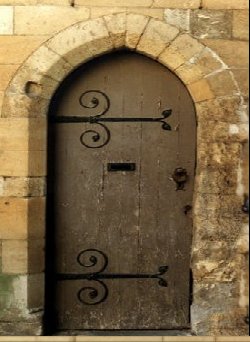|
|
|
|
Doors to the Past |
|
BarboursvilleHistory of Barboursville Community Prepared By J. W. Miller 1925 Barboursville became the county seat of Cabell County in 1813. The county was taken from Kanawha County in 1809. It included all of Wayne, Lincoln, and a large part of Logan, Boone, and Putnam counties. Its area was 1750 square miles, with a population in 1810 of 2717, including 221 slaves and 25 Indians not taxed. Or about 1 1/2 persons to the square mile. We now have one sixth of this area, and more than 300 people to the square mile. Immigration began to come in about 1780 and land was easy to get, was marked out and claimed, and the state would sell the settler as much as one thousand acres or more, at the small price of $1.60 per 100 acres. Hence, everybody tried to see how much land they could get. The Miller & Thornburg Store As soon as the town became the county seat, immigration became heavy. Hotels, livery stables, stores, shops and factories of all kinds were built. The stores carried large stocks of goods bought in New York or Philadelphia; generally on six or twelve months time. We had no drummers then. The merchants would go to the eastern markets about twice a year to buy their stock. These goods were exchanged for country produce, grain, dried fruit, hogs, ginseng, deer hides, and feathers. Women brought in products of the loom, jeans, linsey, flax, tow linen, and white flannel, all of which had a ready sale at home. There was much traffic between Barboursville and Logan. Among the business men and firms were Absolom Holderby, F.G.S. Buehring, Henderson & Miller (afterwards Miller & Thornburg), John G. Miller & Brother, Matthew Thompson, and others. Barboursville was known as a manufacturing town. There was a furniture factory, a fan mill factory, hat factory, wagon and buggy factory, two or three harness shops, a large tannery, which supplied the home market and exported as well, large lots of leather, there were several tailors, blacksmiths, shoemakers, a large mill built by Miller & Moore, which cut large quantities of steam boat bottoms, lumber of clear oak, some of it 36 feet long. All of it went to Jeffersonville, Indian, by barges, which were built in Barboursville. This saw mill was wrecked during the Civil War. A great many of these workers were Germans. There were immigrants from every nation who came here to better their conditions, and to found peaceful homes. ( 1 )
|
